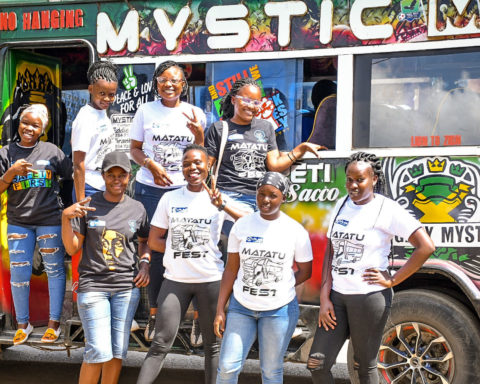Impact & Learnings
- Perceived safety of public spaces in the community increased from 15% to 31% among youth
- Belief that youth influence decision making on safety issues to a large extent increased from 9% to 36%
- Youth who came together with other community members to address a common issue in the past 12 months increased from 18% to 44%
- Lighting in informal settlements increases safety and mobility after dark, particularly for women and girls
- Lighting initiatives allow youth to partner with local stakeholders and benefit the whole community
- Safety toolkit training provides young people with transferable skills to solve issues affecting their communities
“Light is as basic as food”
Azeb, a resident of Arada informal settlement
In Woreda 2 of Arada, an informal settlement in Addis Ababa, the streets have been without light for too long. Residents say they have lost all mobility at night because of the danger darkness brings. Many residents have been attacked and some have even lost their lives; women and young girls suffer the most, with the threat of sexual assault hanging over them at all times.
Local youth, organized under YWCA as participants in the SAIC programme, attended safety training in which they carried out different activities that helped them to understand, analyse and plan to solve issues affecting their community.
“when we began to draw our safety mapping, most of our streets were coloured with black markers [signifying danger]…
This is my community, my reality.”
The youth and some community leaders began to prioritise issues affecting their community and street lighting stood out as one of their top concerns. After completing and submitting plans for their street lighting initiative, YWCA supported the youth to carry out community dialogues and purchase 108 bulbs to light up the darkest and most dangerous spots in the neighbourhood. The youth coordinator of Woreda 2, Yohannes, said: “In the process we were working with community leaders, government officials and community police officers. The police officers were very interested in the issues and they wanted to work alongside us. Together we started mobilising the community and reaching business owners, it was fascinating. With community leaders and community police officers, we also approached the Ethiopian Electric Service district office to assist with the maintenance of streetlights on our main street.”
A total of 823 bulbs were installed on previously unlit side streets, from which 108 bulbs were provided by YWCA and 686 were donated by mobilised community members and the private sector. Another 29 bulbs were installed on the main street by the Ethiopian Electric Service.
Police officers and community members in Woreda 2 have testified that the initiative has contributed to a reduction in violence and has increased the possibility for mobility among community members at night, especially women and young girls.
“we continue to work with business owners, police officers and community members to make the streets safer.”
The youth group of 42 members continue to work on community safety on a voluntary basis in collaboration with community police and the community security committee. Members of the group observed that their initiative has contributed to the reduction of violence and crime in dark streets and an increase in safe mobility for community members who had previously felt vulnerable in low-light conditions.
Since the initial installation of the lights, the group has continued to engage with the community through this initiative. Martha, a member of the group said, “Our initiative of lighting the streets has continued. An additional 318 electric bulbs have been installed as we continue to work with business owners, police officers and community members to make the streets safer.”
The following video shows the results of a similar youth-led lighting initiative in Uganda:

Learn more about


















